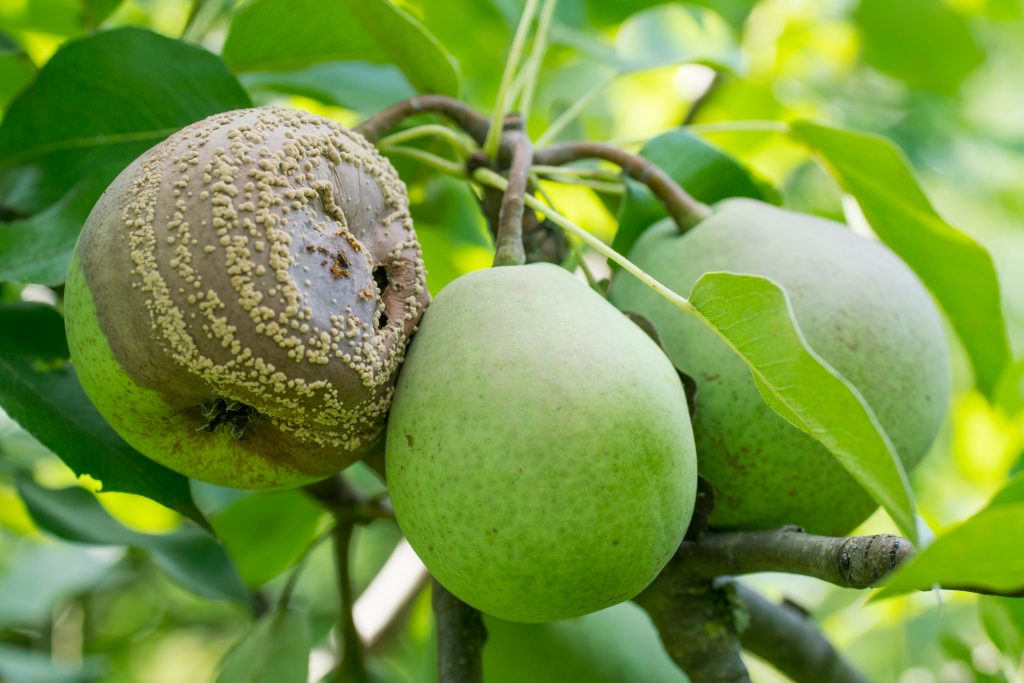
Why do pear fruits massively crack and rot on a tree before ripening begins? The culprit of this phenomenon is the ubiquitous fungal disease moniliosis (fruit rot). In conditions comfortable for the fungus, it destroys up to 80% of the crop. There are many reasons for the appearance and development of the disease, we will analyze each of them, and we will describe methods for eliminating the problem.
Content
Causes of rot on pear fruit
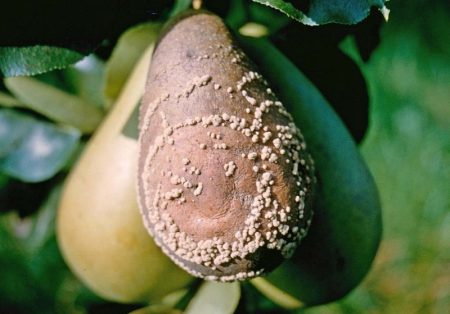
The disease is dangerous because the signs of damage become noticeable only when the fruits begin to pour. Small brownish spots appear on the skin, which grow very quickly, can cover the entire surface of the fetus in 7-10 days.
In the affected areas of the fetus, yellowish-white or dark gray pillows are formed, located in concentric circles, spores of the fungus are clearly visible on them. Often, individual severely affected pears remain hanging on a tree. Through the petiole they infect fruit branches, which dry out, and the fungus will winter inside.
It will not work to cure the pear and collect healthy fruits in one season, but timely measures and subsequent prevention will help save future crops.
Rot can also damage skeletal branches. On the surface of the cortex, distinct indented spots appear, eventually encircling the branch, which leads to the complete drying out of its upper part.
What factors lead to decay of unripe fruits:
- Old varieties derived from wild pears have a genetic predisposition to rot. The problem is not caused by the disease, but by the process of optimally preparing the seeds for germination. It is easy to distinguish the varietal feature of culture from the development of the disease - in pears, folk selection, the fruits begin to rot from the tail, to full ripening, the defeat takes up most of the core.
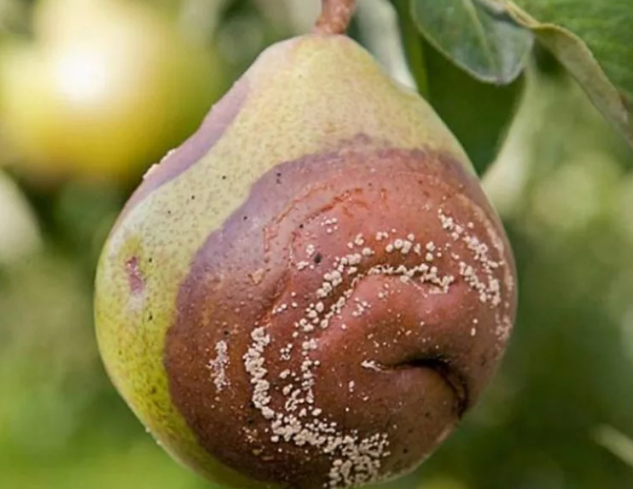
- The fungus, leading to the development of moniliosis, can get into the pulp through various lesions on the skin caused by wasps, birds, hail or other diseases. Healthy pears are affected by contact with the patient.
- Spores are carried by wind and insects. Pests, in the process of life, leave many traces on the fruits and other parts of the tree, all the affected areas serve as a gateway to the spores of fungi.
- The best condition for the development of rot will be high humidity (from 75%) in warm weather (+ 24–28 degrees). In rainy summers, the risk of moniliosis is highest.
- Spores are destroyed by direct sunlight, so another reason for the development of rot is thickening of the crown or dense planting of garden crops. Tree branches are poorly ventilated, conditions of high humidity are created.
- With the disease of pears with scab, deep cracks appear on the fruits, covered with a rough crust. The fruits from the scab do not rot, but with the development of the disease, optimal conditions are created for the infection of pears with moniliosis.
- The fungus hibernates in plant debris and in the bark of the tree (atypical browning is visible at this place). If you do not remove the fallen leaves, branches and fruits, especially from diseased trees, the fight against moniliosis will drag on, rot will be a constant occurrence.
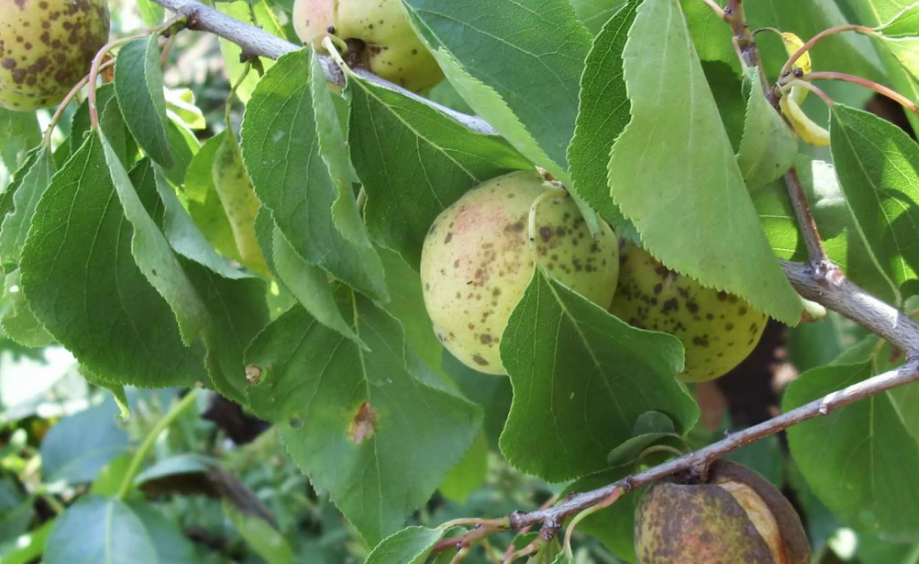
- Strong trees are able to resist the defeat of fungi, but those whose immunity is weakened are affected first. The health of trees is often affected by a lack of macro and micronutrients in the soil.
- The fungus is very tenacious, it is not afraid of severe frosts.However, the most serious outbreaks of fruit rot were observed in years with warm winters.
- Another risk is infection of neighboring trees. In your own garden, solving the problem will be simple, more difficult for those whose plot is located next to the untidy and abandoned gardens.
Fruits affected by moniliosis cannot be stored, even if the spots are single, small, the flesh under them can change color, become brown and porridge. Rotten pears will transmit the infection to healthy fruits.
The disease of pears with moniliosis is a consequence of insufficient and improper care of the tree, this problem can be solved. As for the old varieties of pears, when the fruit rot is laid at the genetic level, you can save the harvest only by collecting unripe fruits and ripening at home.
How to cure a pear from fruit rot, prevention
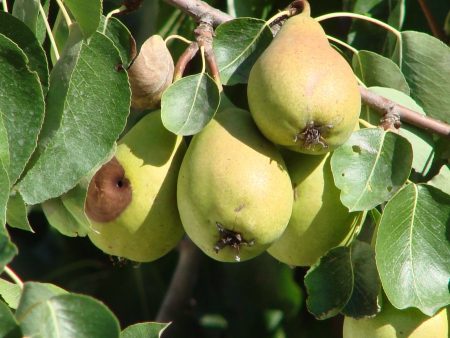
Treatment of fruit rot should be comprehensive. The fight against moniliosis, as well as with the scab, should begin in the same season when the first signs of illness were noticed, it is extremely undesirable to postpone the procedure until spring. In the case when specks covered most of the fruits, the entire crop is removed and sorted. More or less surviving pears should be eaten as soon as possible or sent for processing (stewed fruit, preserves and other preparations for the winter). All rotten fruits are carried away from the garden. Getting to treatment:
- Before the onset of frost, one treatment with 1% Bordeaux liquid is carried out and the trees are sprayed twice with Abiga Peak. Moniliosis affects almost all stone fruit crops, it is also desirable to process them, but only if all the fruits are collected. The interval between the procedures can be selected independently. Before the onset of leaf fall, pears are sprayed with 5 or 8% urea solution.
- Immediately after leaf fall, all plant residues are removed from the garden and burned. Dry pears left on the tree also pick. They clean old or infected bark from trunks and skeletal branches. Dig the soil in the trunk circles. The last procedure for preparing pears for the winter will be whitewashing trunks.
- In spring, before the sap flow begins, dry, damaged branches and shoots are cut, the crown is thinned, then trees and soils are sprayed three times with protective fungicides. The first procedure is before budding, the next immediately after flowering, the last after another 2 weeks. Many gardeners successfully use Bordeaux liquid, for the first spraying they prepare a 3% solution, for the next 1%.
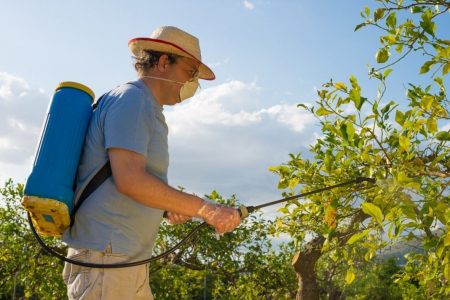
- Do not ignore the prevention of pests, especially caterpillars, moths, aphids and weevils. Spraying is carried out from early spring until almost the start of the harvest. Good results are shown by such drugs as Fufanon, Aktara, Confidor, Decis and CALL. Depending on the type of insect and the degree of damage to the tree, you can choose another remedy.
- During the growing season, another 2 or 3 sprayings of the garden with copper-containing preparations should be carried out. During the period of formation and filling of fruits, chemistry can be replaced with biological agents, for example, Fitosporin, Fitolavin, Mikosan or Alirin. A month before harvesting, use a pharmacy - 10 ml of iodine per 10 liters of water (2 treatments with an interval of 3 days).
Bordeaux liquid can be used no more than 3 times for the entire pear growing season. For recommended concentrations of chemicals, see the packaging; observe the time between processing and harvesting. For example, preparations Khom, Oksikhom, Polykhom and copper sulfate are used 30 days before fruit ripening.
How to fill the deficit of useful elements
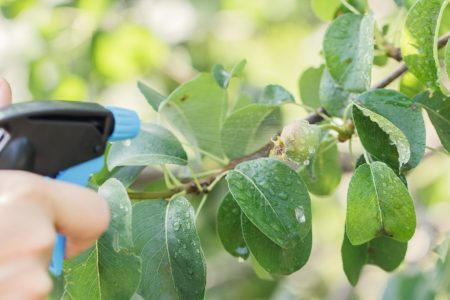
Once a season, a pear with signs of a deficiency of useful elements (poor development of the tree, shrinking fruits, pale color of the leaves) is sprayed with a special solution. Universal recipe for 10 liters of water:
- 100 grams of urea;
- 5 grams of copper sulfate;
- 3 grams of boric acid and potassium permanganate.
Means can be used in tandem with pesticides, at the same time carry out protective treatments. The solution is quickly absorbed by the leaves, stimulates and controls the basic processes of tree life, improves the absorption of available nutrients from the soil.
Agricultural techniques, useful tips
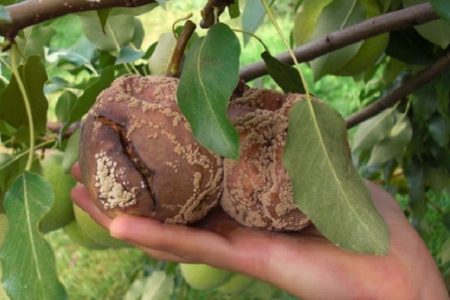
The first thing to do when you find slightly rotted pears is to remove them from the tree. Peel off any damaged fruits (cracked, scratched, etc.). The carrion is removed during the entire growing season. Spoiled fruits, especially those with traces of scab and moniliosis, cannot be stacked in compost heaps.
Keep the garden clean during the summer, remove all weeds, fallen branches, leaves. When working with trees, use only carefully cleaned, decontaminated garden tools. Treat wounds after trimming branches and cleaning the bark with garden var or special paint.
In rainy periods, if possible, loosen the earth in tree-trunk circles, organize drainage. In dry, hot summers, the disease usually does not occur, but there are exceptions associated with "stress cracking of the fruit." If, after a long drought, water is abundantly watered, the dehydrated pulp of pears will quickly become saturated with moisture, and the skin will not have time to catch up with its mass.
The fungus penetrates into the formed cracks, in 2 or 3 weeks fruit rot will cover the whole tree. In the heat, timely and evenly moisten the soil, be sure to lay a layer of mulch not only in the near-stem circle, but also under the entire crown.
Do not plant pears near stone fruit, with cherries, elderberries, chestnuts, nuts and peaches, as well as with currants, raspberries and other shrubs. Pear trees should not be placed in places where there is a lot of shade.
To scare away various pests without resorting to chemical treatments, organize small flower beds in the garden with a pharmacy chamomile, wormwood, calendula and tansy. If pests have already appeared, decoctions and infusions for spraying can be made from the same herbs.
Varieties of pears resistant to fruit rot
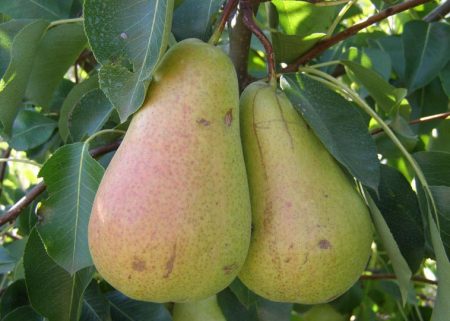
There are no completely resistant pear varieties, but there are varieties that have fairly good immunity to all fungal diseases, including scab. We highlight the best of them:
- Aurora (Lubin);
- Bere winter Michurina;
- The conference;
- Cure;
- Krasnodar summer;
- Summer Sergeeva;
- Radiant;
- Lyra;
- Early Moldavian;
- Honey
- October;
- Autumn dream;
- Roxolana;
- Saint Germain;
- Trembita.
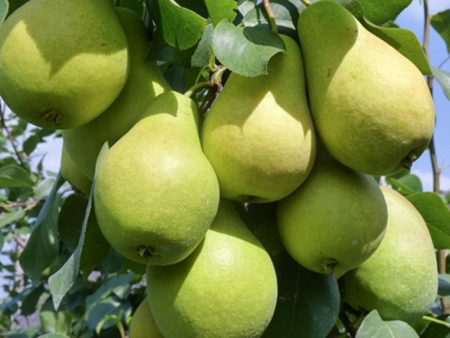
The most affected fruit rot are varieties such as Sapezhanka and Dekanka winter. The magic tools that destroy the disease in one treatment have not yet been invented. It is impossible to get rid of the disease once and for all, since the fungus is spread by birds, wind and insects. The fight against rot is a complex of ongoing preventive measures carried out from early spring to late autumn.

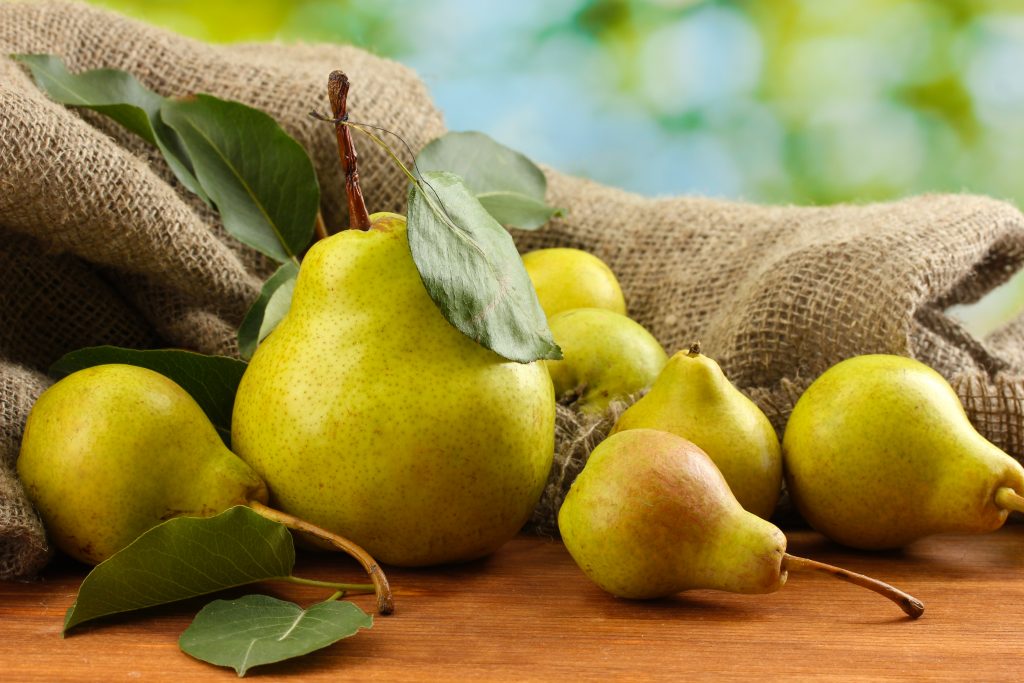
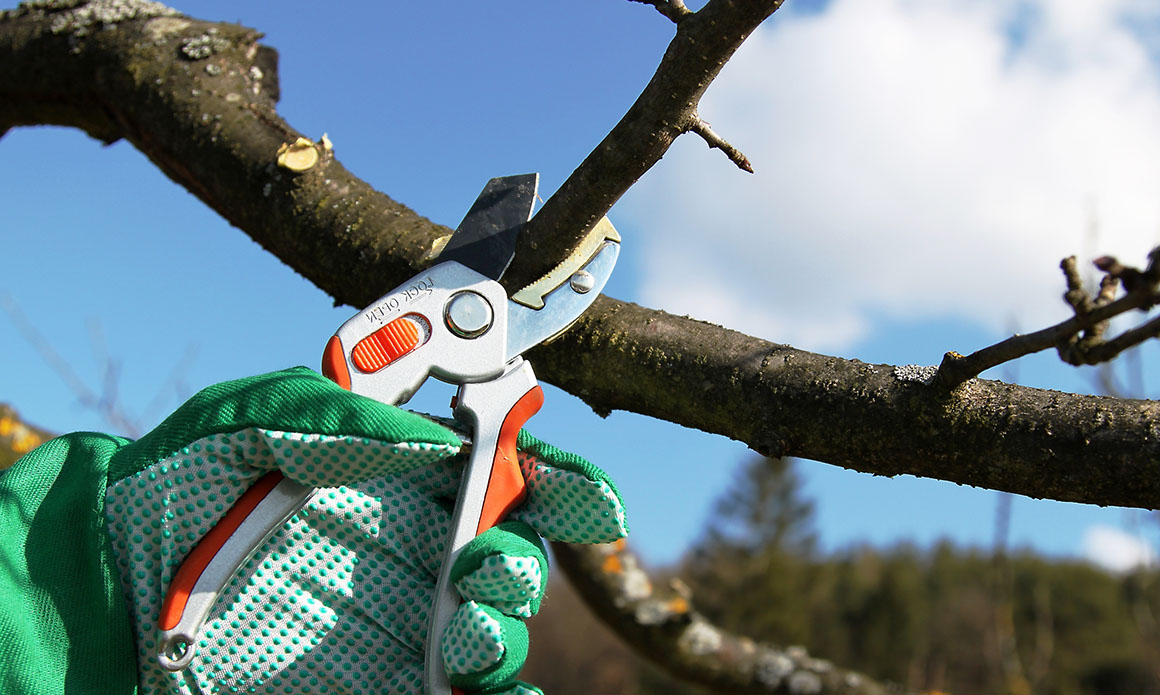
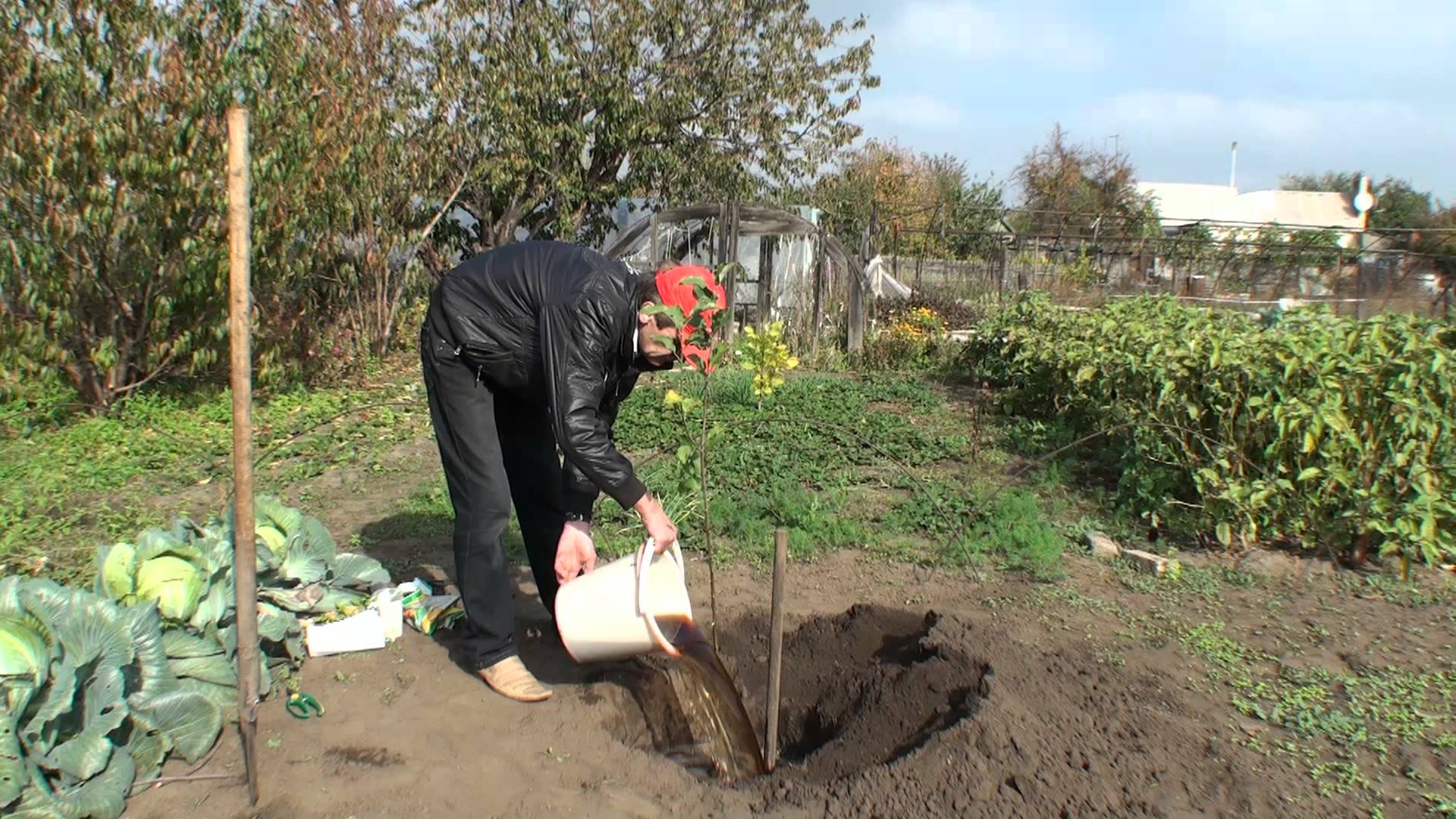
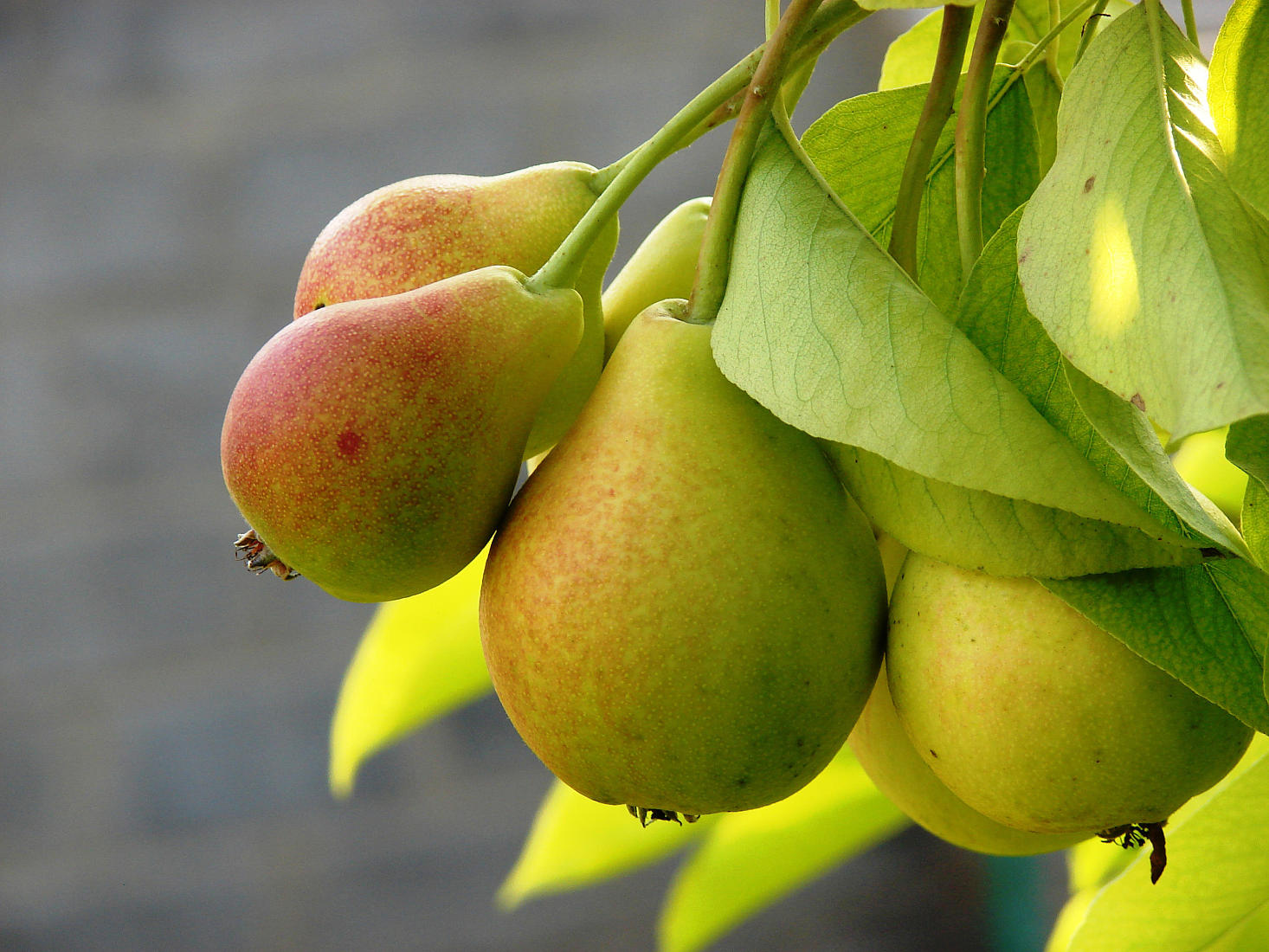 Pear "Noyabrskaya" winter: variety description
Pear "Noyabrskaya" winter: variety description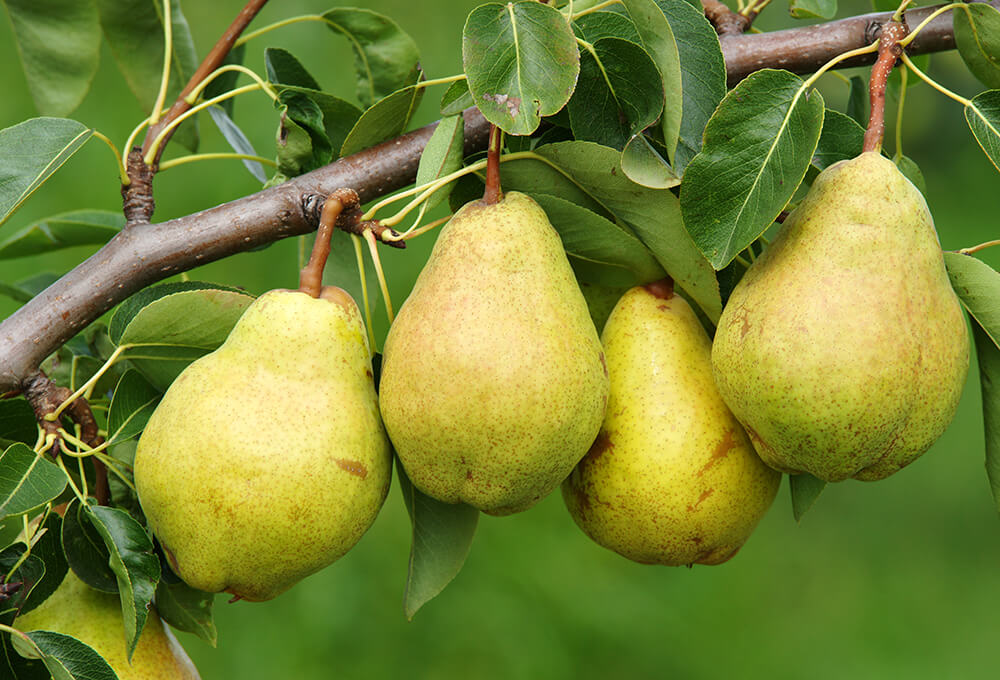 Now we know the reasons and what to do if the pear drops its fruit ovary
Now we know the reasons and what to do if the pear drops its fruit ovary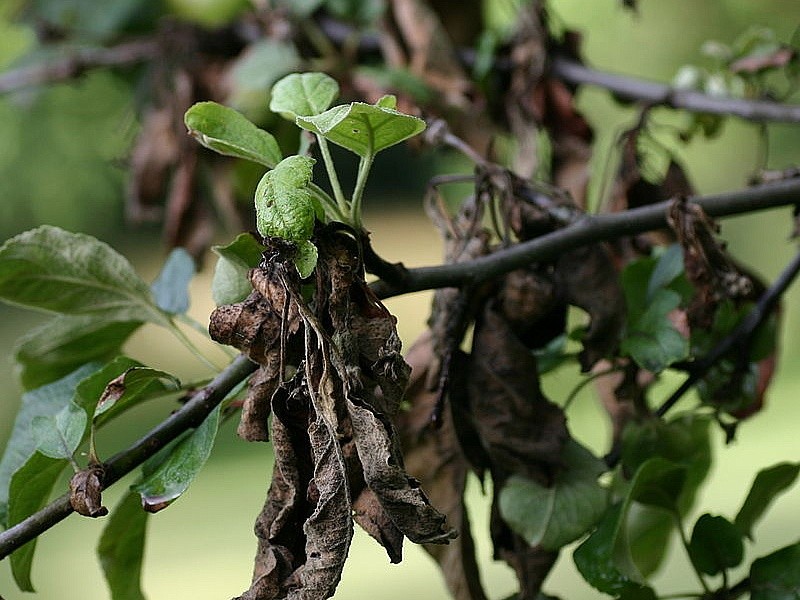 This drug from the pharmacy will help to cure the blackening and curling of foliage in a pear.
This drug from the pharmacy will help to cure the blackening and curling of foliage in a pear.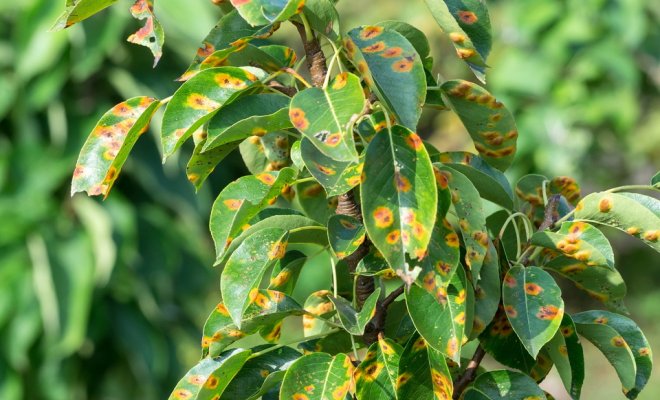 Are orange spots on pear leaves a disease? How to treat?
Are orange spots on pear leaves a disease? How to treat?